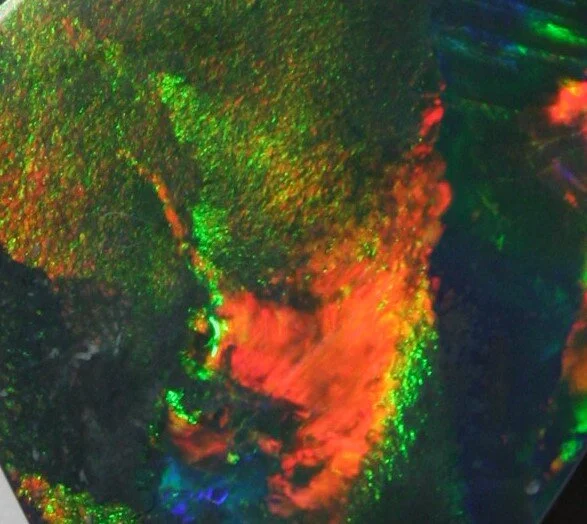Opal Nomenclature or is that classification?
opal nomenclature (noh-men-kluh-cher, or nuh·meng·kluh·chuh)
The term nomenclature has ben used throughout history for the classification of different items in much scientific literature. Perhaps the best known nomenclature is the naming of species in the biological sciences.
A NOMENCLATURE is a system of names or terms, or the rules for forming these terms in a particular field of arts or sciences. The principles of naming vary from the relatively informal conventions of everyday speech to the internationally agreed principles, rules and recommendations that govern the formation and use of the specialist terms used in scientific and any other disciplines.(source , Wikipedia).
The classification of opal has always presented difficulties and many different names have been given to opals. Broadly speaking opal types have often been named by:-
Their use in jewellery and gemstone trading
their value (precious opal, common opal),
their association with other materials (boulder opal or matrix opal),
their mode of formation (Nobby opal, pipe opal or seam opal),
their geological occurrence (sedimentary opal or volcanic opal),
their mineralogy (Opal-A, Opal-CT, Opal-C)
their body colour or tone (Black opal, White opal or Fire opal),
their replacement of other things (wood opal or shell opal),
the quality of their Play-of-Colour (brightness, colours, consistency)
their type of pattern (harlequin opal, pinfire opal)
by geographical location, (Mexican opal, Lightning Ridge opal).
their other phenomenal observable details, (dendritic opal, moss opal, cats eye opal)
their fossil or paleontological characteristics
In 1999 an opal nomenclature was introduced in collaboration with The Gemmological Association of Australia (GAA), The Lightning Ridge Miners Association (LRMA), The Jewellers Association of Australia (JAA) and the National Opal Miners Association (NOMA). The nomenclature was tabled at CIBJO (The World Jewellery Confederation (Confédération International de la Bijouterie, Joaillerie, Orfèvrerie) and accepted as a suitable nomenclature for describing and classifying types of opal.
Recent (2014) discussions within the International Coloured stone Association (ICA) subcommittee the Gemstone Industry and Laboratory Conference (GILC) have agreed to add a fourth ‘Natural’ opal type to the nomenclature with the advent of opal discoveries in Ethiopia. This fourth type of precious opal (opal with a Play-of-colour, POC) is termed precious Hydrophane opal. From a mineralogical point of view, Hydrophane opal is absorbent. This means that when immersed in different liquids, the liquid is absorbed into the gemstone and can change its appearance.
Much of the Ethiopian material is of this mineralogical variety of opal known as “Hydrophane”. It is so called because of its porosity and ability to absorb water in particular.
As this opal is essentially “all opal” and technically falls into the opal “Type 1” category (as published in the Australian Gemmologist). It is unclear as to how the nomenclature will change. It may well be that Type 1 will be subdivided into Type 1A and Type 1B. The other option is to create Precious opal type 4 as Precious Hydrophane Opal. This is yet to be determined.






